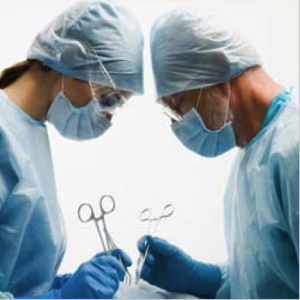Plastic surgery industry turns 100 years old – how has it changed?
Aurora is now part of The Private Clinic, a nationwide group of clinics with over 35 years of experience specialising in Cosmetic Surgery and Skin and a Trust Pilot 5 star rating. For comprehensive information, before and after photos and costs on our range of procedures click here
Our clinics are located in Birmingham, Bristol, Buckinghamshire, Glasgow, London Harley Street, Leeds, Manchester and Northampton.
It’s helped countless people turn back the hands of time, but plastic surgery is no spring chicken itself. This year, the plastic surgery industry comes of age – incredibly, celebrating its 100th birthday.
Like most of us, the way it looks today is very different from how it shaped up in years gone by. But unlike most of us, it has only improved with age. Let’s take a quick look at how things have changed.
Birth of the plastic surgery industry
It’s believed the earliest forays into plastic surgery happened way back in around 600BC in ancient India. But the modern plastic surgery industry was born in the trenches of the First World War.
Harold Gillies, an accomplished ear, nose and throat surgeon, volunteered to serve in the Red Cross during the war. In 1915, while working in a field hospital in Flanders, Belgium, the severity of the injuries he saw prompted him to experiment with new techniques.
Where skin grafts were not sufficient to patch soldiers up, Gillies used a new approach. He created a ‘tube pedicle’ – a strip of flesh cut from a healthy part of the body (often the chest or forehead), that was still attached at one end. This strip of tissue was swung over to the wounded area, folded in on itself and attached. This method preserved the living tissue and blood supply inside, preventing infection.
It may have looked unorthodox, but offered huge improvements for soldiers living with life-changing facial injuries. Mr Gillies treated around 2,000 injured servicemen using his surgical techniques – and found time to train colleagues too.
Plastic surgery hits Hollywood
By the 1920s, plastic surgery had made its way over to Hollywood. Stars of the stage, wanting to look as good on the screen, sought help to iron out any imperfections that might be magnified by the unforgiving gaze of the cine cam. Notable celebrity nip and tucks in the early days of cinema include Rudolph Valentino, who had his prominent ears corrected, and Gloria Swanson, who took the plunge with a facelift.
Another war brings new advances
In the 1940s, the Second World War ushered in another great leap forward for the plastic surgery industry – military surgeons once again having ample opportunity to perfect their reconstructive techniques on the casualties of war.
Archibald McIndoe, who had trained under Harold Gillies in the Great War, made huge strides treating RAF airmen with severe burns, setting up the ‘Guinea Pig Club’ in 1941 to practice his pioneering methods.
Post-war developments
The post-war period is when the plastic surgery industry really started to gain traction with the public.
The world’s most popular cosmetic surgery procedure, breast enlargement, arrived on the scene in 1962, when Texan Timmie Jean Lindsey became the first-ever woman to receive silicone breast implants. And the 1980s saw US dermatologist Jeffrey Klein pioneer tumescent liposuction using local anaesthetic.
Arguably, the 1980s and 1990s were all about how far we could go with plastic surgery. The industry was on the ascendant, and people were excited by new possibilities to look better and younger. In this climate, subtlety was often not on the menu.
Facelifts probably defined this period – and not necessarily in a good way.
The plastic surgery industry today – and beyond
Today, the plastic surgery industry seems to be maturing and settling down. Though more popular than ever (especially among male patients, as we’ve seen in our own clinics), the aims and approach have changed.
These days, the mantra is ‘less is more’. Rather than changing the way they look, people are looking to enhance and bring out the best in what nature gave them.
And with this shift in attitudes has come the development of more sophisticated cosmetic techniques. Where before the pioneering work was being carried out by reconstructive plastic surgeons, now cosmetic surgeons are pushing boundaries and finding new methods of their own.
Fat transfer is one such procedure. Developed by cosmetic surgeons to treat facial ageing, it’s now used by plastic surgeons to help reconstruct breasts following mastectomy.
We’re likely to see more of this knowledge-sharing as the plastic surgery industry evolves and demand keeps growing. New procedures will inevitably come to the fore, and who knows – one may eventually prove more popular than breast enlargement.
One thing’s for certain: the future of plastic surgery is likely to look very different from its past.
Aurora Clinics are a nationwide plastic and cosmetic surgery clinic founded by Aurora Clinics Founder, one of the leading surgeons in the UK plastic surgery industry. For information on our procedures, or to book a consultation, please call us on 01324 578290 or email mailto:info@aurora-clinics.co.uk.
